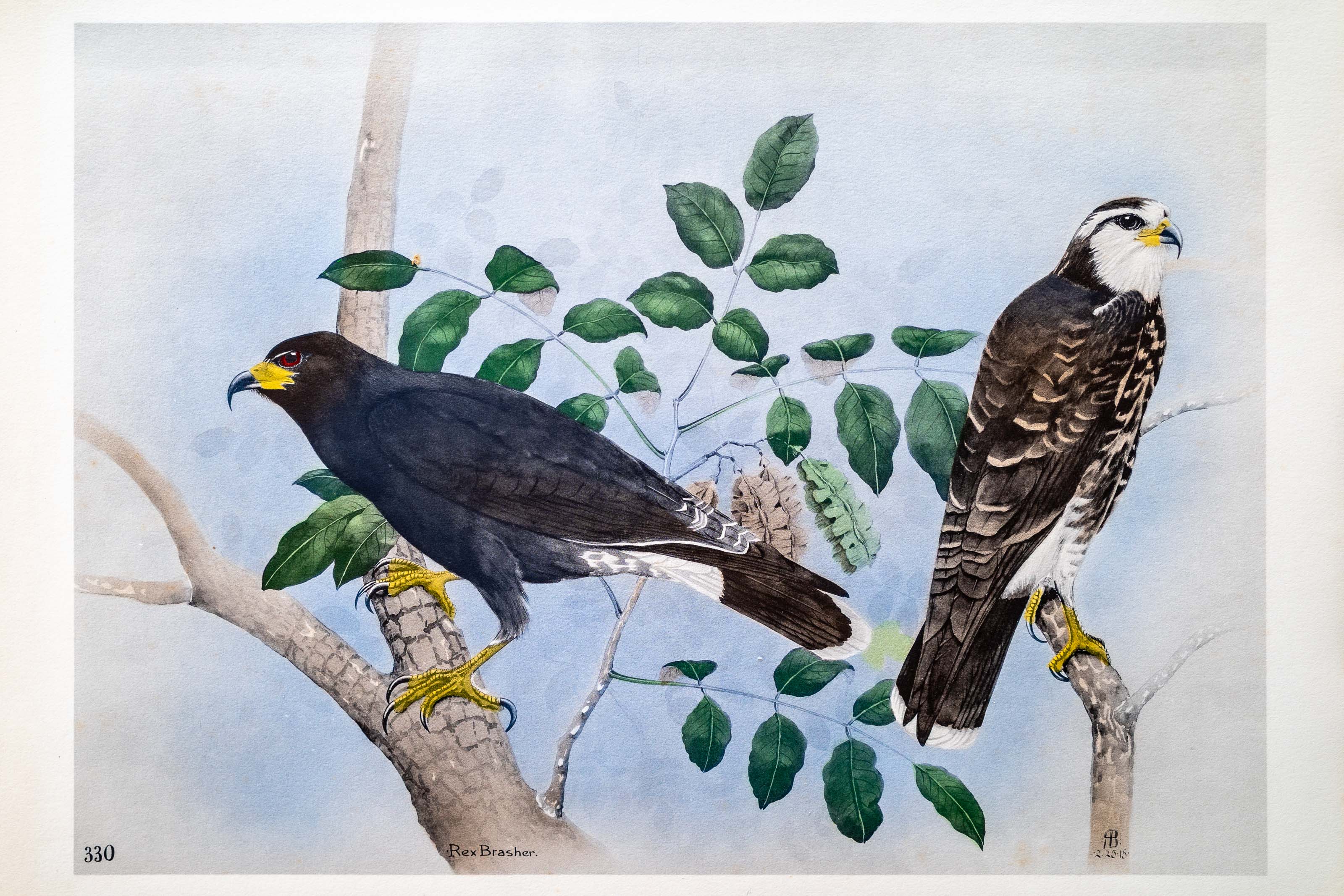
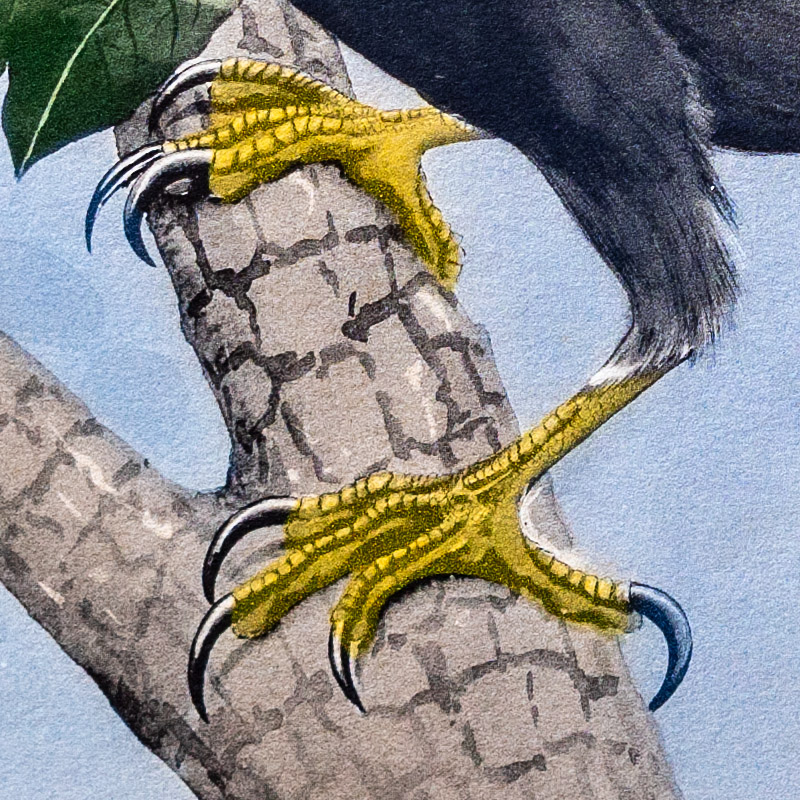
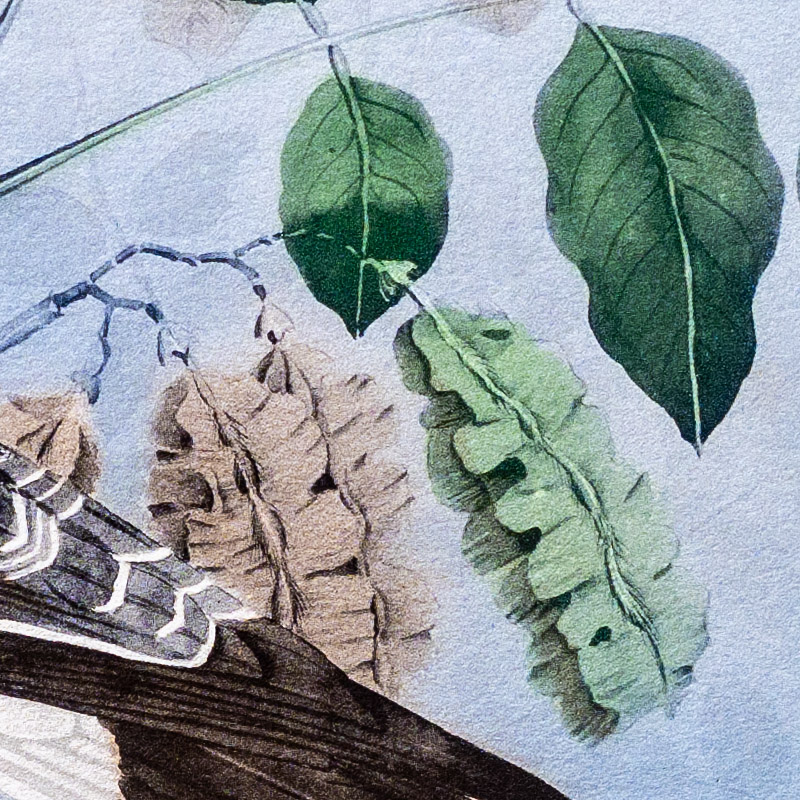

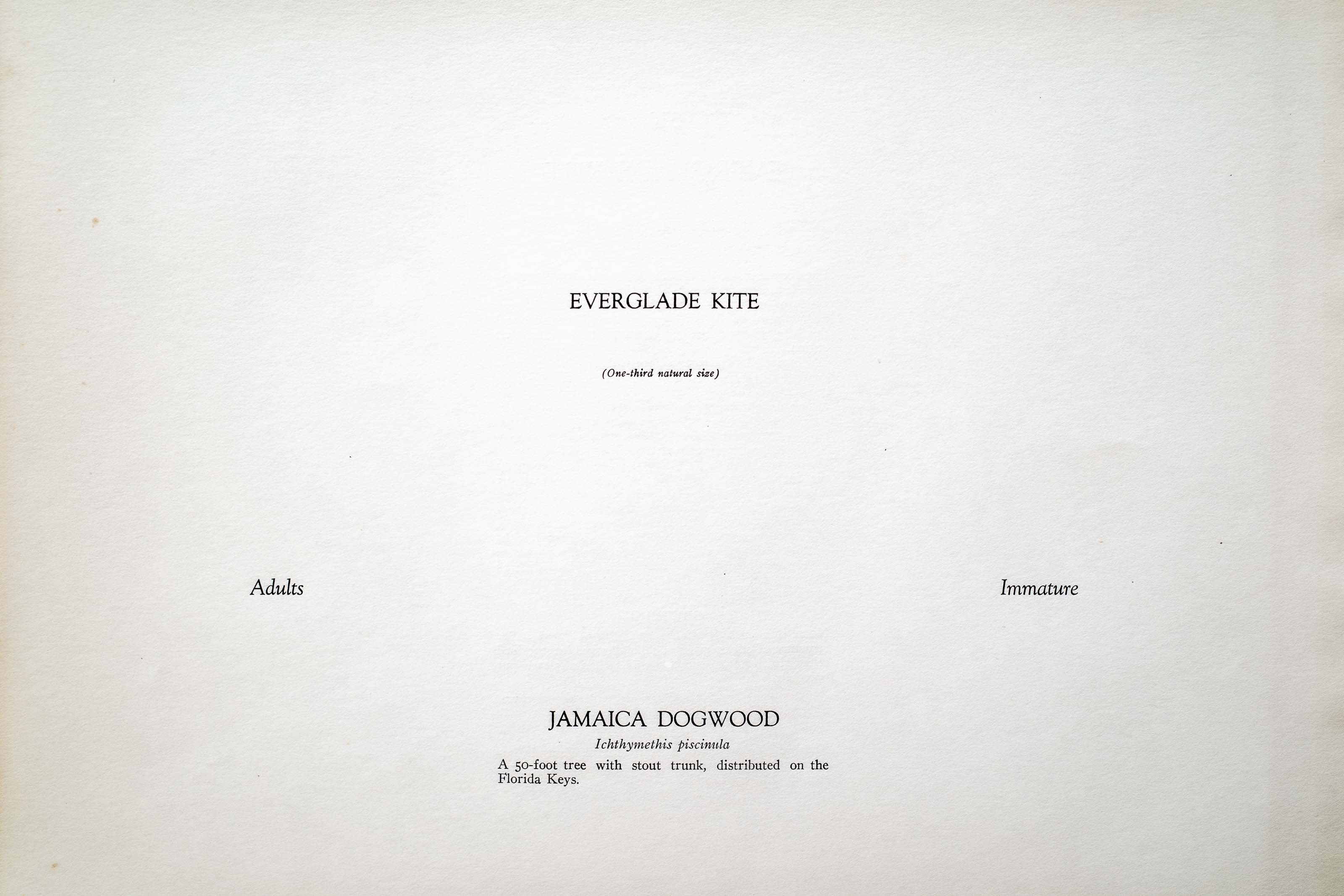
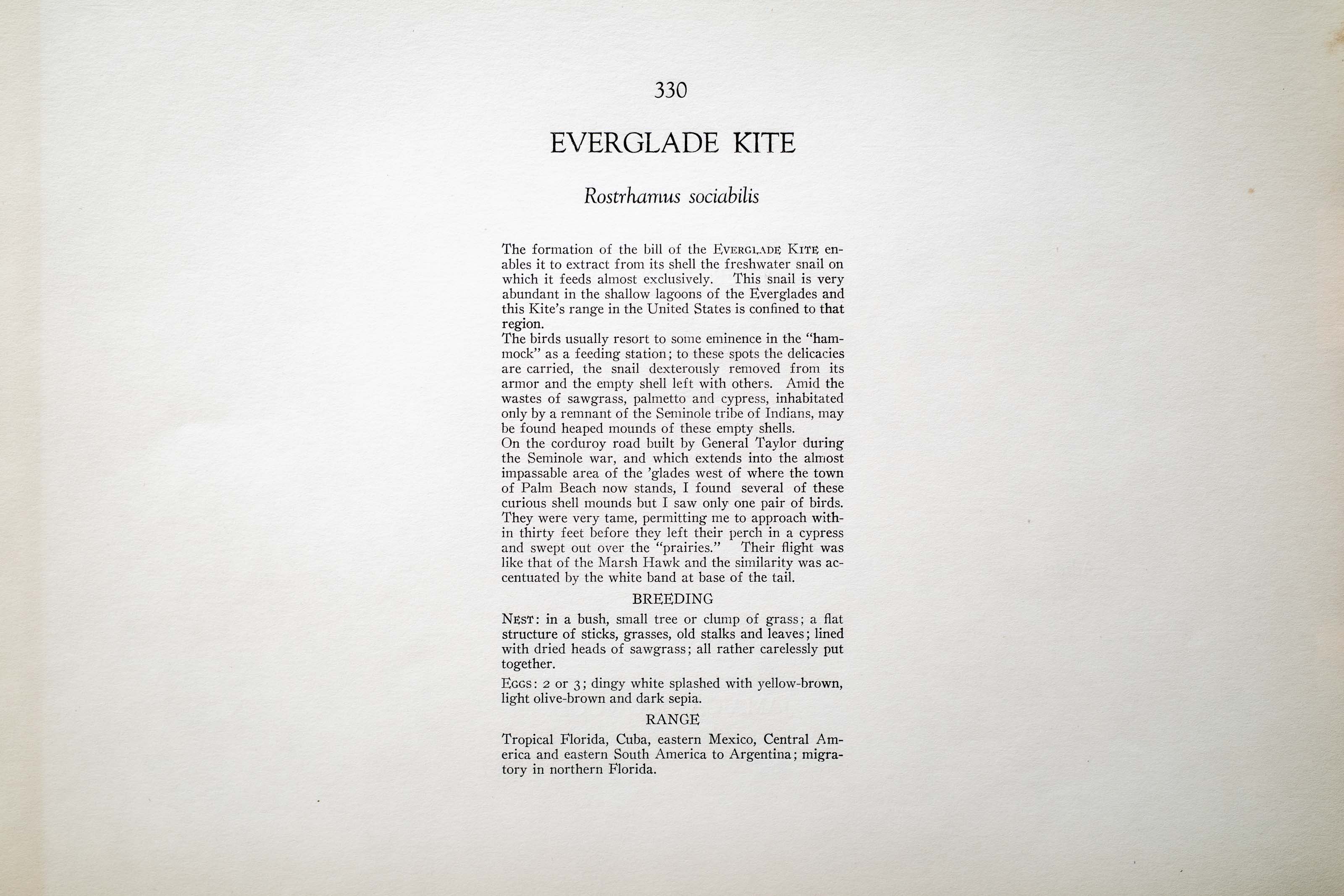

1915
1930
5
330
A team of dedicated board members, volunteers, and student interns has published every page in Volume 9. This volume includes 360 images of paintings and lyrical descriptions of birds, now available online for everyone to enjoy anywhere in the world. This is a monumental task. Each volume requires approximately 400 hours to photograph, edit, transcribe, catalog, and publish online. We need your support to complete this work.
If you're tech-savvy, have a good eye, are meticulous with details, and love structured data, please consider volunteering by emailing us at hello@rexbrasher.org.
We encourage all bird lovers and supporters to consider a monetary donation to support our mission to make Rex's work available for everyone. You can provide a one-time or recurring donation online.
The formation of the bill of the EVERGLADE KITE enables it to extract from its shell the freshwater snail on which it feeds almost exclusively. This snail is very abundant in the shallow lagoons of the Everglades and this Kite's range in the United States is confined to that region.
The birds usually resort to some eminence in the "hammock" as a feeding station; to these spots the delicacies are carried, the snail dexterously removed from its armor and the empty shell left with others. Amid the wastes of sawgrass, palmetto and cypress, inhabitated only by a remnant of the Seminole tribe of Indians, may be found heaped mounds of these empty shells.
On the corduroy road built by General Taylor during the Seminole war, and which extends into the almost impassable area of the 'glades west of where the town of Palm Beach now stands, I found several of these curious shell mounds but I saw only one pair of birds. They were very tame, permitting me to approach within thirty feet before they left their perch in a cypress and swept out over the "prairies." Their flight was like that of the Marsh Hawk and the similarity was accentuated by the white band at base of the tail.
NEST: in a bush, small tree or clump of grass; a flat structure of sticks, grasses, old stalks and leaves; lined with dried heads of sawgrass; all rather carelessly put together.
EGGS: 2 or 3; dingy white splashed with yellow-brown, light olive-brown and dark sepia.
Tropical Florida, Cuba, eastern Mexico, Central America and eastern South America to Argentina; migratory in northern Florida.
A 50-foot tree with stout trunk, distributed on the Florida Keys.